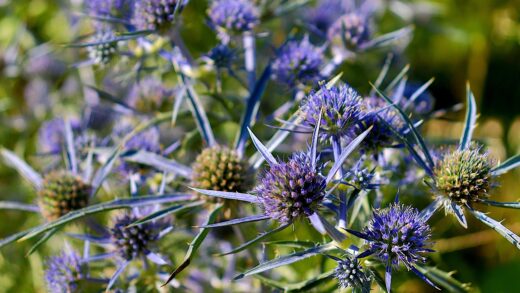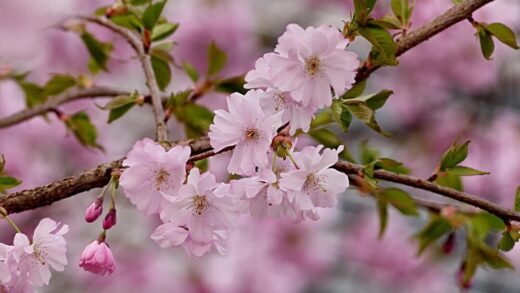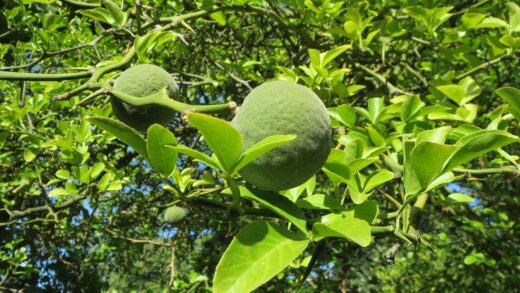Understanding the precise water requirements of the Japanese ornamental cherry is fundamental to its cultivation, as both insufficient and excessive moisture can lead to significant health problems. These trees, while relatively resilient once established, have specific needs that vary depending on their age, the time of year, and prevailing environmental conditions. Proper irrigation is not merely about providing water, but about providing the right amount at the right time, ensuring it reaches the root zone where it is most needed. Mastering the art of watering is a key skill that directly contributes to the tree’s vigor, the quality of its floral display, and its overall longevity in the garden.
For a newly planted ornamental cherry, consistent moisture is the most critical factor for its survival and successful establishment. During the first one to two growing seasons, the tree’s root system is still developing and confined to the original root ball, making it highly susceptible to drying out. The goal is to keep the soil in and around this root ball consistently moist, but not waterlogged, to encourage roots to venture out into the surrounding native soil. This initial period of dedicated watering sets the foundation for a healthy, drought-tolerant tree in the future.
As the tree matures, its water needs evolve. An established ornamental cherry develops a much more extensive root system that can explore a larger volume of soil for moisture, making it more resilient during short dry spells. However, it is a misconception that mature trees require no supplemental irrigation. During extended periods of high heat and low rainfall, even established trees can experience drought stress, which can manifest as wilting leaves, premature leaf drop, and a weakened state that makes them more vulnerable to pests and diseases.
The method of water delivery is just as important as the frequency and volume. Superficial, light sprinklings that only wet the surface of the soil are largely ineffective and can encourage shallow root growth. The most beneficial irrigation technique is a deep, slow soaking that allows the water to penetrate 12 to 18 inches into the soil profile. This encourages the development of a deep, robust root system, which is the key to a tree’s stability and ability to withstand drought conditions.
Ultimately, there is no single, rigid schedule for watering a Japanese ornamental cherry; the best approach is to monitor the tree and the soil conditions closely. Factors such as soil type, temperature, wind, and recent rainfall all influence how quickly the soil dries out. Learning to recognize the early signs of water stress and checking the soil moisture with your hand before watering are the most reliable ways to provide for your tree’s needs, ensuring it remains a healthy and beautiful centerpiece in the landscape.
More articles on this topic
Watering newly planted trees
The period immediately following planting is the most critical for water management. A new tree has a limited root system and is highly vulnerable to transplant shock, which is often exacerbated by a lack of moisture. For the first few weeks, you may need to water the tree every two to three days to keep the root ball from drying out completely. The objective is to maintain a consistently moist environment that encourages the delicate root hairs to regenerate and begin growing into the new soil.
Throughout the first full growing season, a regular and deep watering schedule is paramount. A general guideline is to provide the equivalent of about 10 gallons of water for every inch of the tree’s trunk diameter, applied once a week. However, this must be adjusted based on weather conditions. During a cool, rainy week, supplemental watering may not be necessary at all, while during a hot, dry, and windy spell, you might need to water more frequently, perhaps every four to five days.
The most effective way to water a new tree is to apply the water slowly and directly over the root ball. Using a soaker hose coiled around the base of the tree or simply letting a garden hose trickle on a low setting for an extended period are excellent methods. This slow application prevents runoff and ensures the water penetrates deeply into the soil rather than just wetting the surface. Creating a small soil berm, or watering ring, around the perimeter of the root ball can also help to contain the water and direct it down to the roots.
It is crucial to continue this dedicated watering regimen for at least the first two years after planting. This is the typical timeframe it takes for a tree’s root system to become well-established and capable of sustaining the tree on its own during normal weather conditions. Failing to provide adequate water during this establishment period is one of the most common reasons for new tree failure. Consistent care in the early years is a direct investment in the long-term health and beauty of your ornamental cherry.
More articles on this topic
Irrigation for established trees
Once a Japanese ornamental cherry has been in the ground for two to three years and is showing signs of vigorous growth, it is considered established. Its root system will have expanded well beyond the original planting hole, making it much more efficient at sourcing water from the surrounding soil. During periods of normal rainfall, an established tree will typically not require any supplemental watering. Its extensive roots can find the moisture they need, allowing the gardener to be much more hands-off.
However, even mature trees are not completely immune to drought. During prolonged hot, dry spells, typically lasting for several weeks without significant rain, supplemental irrigation is highly recommended to prevent stress. A drought-stressed tree may exhibit symptoms like wilting leaves that do not recover in the evening, scorched or browning leaf margins, and premature dropping of leaves. Chronic drought stress weakens the tree, reducing its flowering potential and making it more susceptible to opportunistic pests and diseases.
When watering an established tree, it is important to irrigate the entire area under its canopy, known as the dripline. The most active water-absorbing roots are located in the top 12 to 18 inches of soil in this zone, not just at the base of the trunk. A soaker hose or a drip irrigation system laid out in a spiral pattern under the canopy is an ideal way to deliver water slowly and efficiently to this entire root zone. A single deep watering every 10 to 14 days during a drought is far more beneficial than frequent, shallow applications.
Monitoring soil moisture is the best way to determine when it’s time to water an established tree. You can use a simple garden trowel or a soil probe to check the moisture level several inches below the surface. If the soil feels dry at a depth of four to six inches, it is a good indication that the tree would benefit from a deep soaking. This observational approach is more reliable than watering on a fixed schedule, as it accounts for the actual on-site conditions and the tree’s real-time needs.
Recognizing signs of water stress
Being able to identify the signs of both under-watering and over-watering is a crucial skill for any gardener. The symptoms can sometimes be confusingly similar, but careful observation can help you diagnose the problem correctly. The most common sign of an under-watered, or drought-stressed, tree is wilting leaves. The leaves will appear limp, droopy, and may begin to curl inwards to conserve moisture. If the stress is severe or prolonged, the leaves may turn yellow or brown and drop from the tree prematurely.
Another indicator of insufficient water is the condition of the soil itself. If the ground around the tree is cracked and pulling away from the base of the trunk, it is a clear sign that the soil is excessively dry. The tree’s overall growth may also be stunted, with smaller-than-usual leaves and shorter branch extension compared to previous years. In the spring, a drought-stressed tree may produce a sparser display of flowers, or the blossoms may fade and drop more quickly than usual.
Conversely, over-watering can be just as damaging, if not more so, as it leads to root rot. When soil is constantly saturated, the air pockets are filled with water, depriving the roots of the oxygen they need to function and survive. The primary symptom of over-watering is often yellowing leaves (chlorosis), starting with the lower and inner leaves first. The leaves may feel soft and limp, and the tree might exhibit stunted growth, similar to an under-watered specimen.
To distinguish between the two, the most reliable method is to check the soil. If the leaves are yellow and drooping but the soil is consistently wet or soggy to the touch, over-watering is the likely culprit. You might also notice a foul smell from the soil, indicating anaerobic conditions and decaying roots. In this case, it is imperative to reduce the frequency of watering and, if possible, improve the soil’s drainage to allow the root system to recover.
The role of soil and mulch
The type of soil in your garden plays a significant role in how you manage your watering strategy. Sandy soils have large particles and drain very quickly, meaning they need to be watered more frequently, though with smaller amounts of water at a time. Heavy clay soils, on the other hand, are composed of very fine particles that hold onto water for much longer. Clay soils should be watered less frequently but more deeply, allowing the soil to dry out somewhat between waterings to prevent it from becoming waterlogged.
Improving your soil with organic matter is the best way to optimize its water-holding capacity. Adding compost to both sandy and clay soils helps to create a better structure. In sandy soil, compost acts like a sponge, helping to retain moisture and nutrients that would otherwise drain away too quickly. In clay soil, it helps to aggregate the fine particles into larger clumps, creating more air spaces for better drainage and root respiration, thus striking a healthy balance for moisture availability.
Mulching is one of the most beneficial practices for conserving soil moisture and reducing the need for frequent irrigation. Applying a two- to four-inch layer of organic mulch, such as wood chips or shredded bark, over the tree’s root zone acts as a protective blanket. It insulates the soil from the hot sun, dramatically reducing the amount of water lost to evaporation. This keeps the soil cooler and moister for longer, creating a more stable environment for the tree’s roots.
In addition to conserving moisture, mulch provides several other benefits. It effectively suppresses the growth of weeds, which compete with the tree for water and nutrients. As the organic mulch gradually decomposes, it enriches the soil with valuable nutrients and improves its structure over time. Just remember the crucial rule of mulching: always keep the mulch pulled back a few inches from the trunk of the tree to prevent moisture from being trapped against the bark, which could lead to rot and disease.
Seasonal watering adjustments
Watering needs for a Japanese ornamental cherry are not static; they change significantly with the seasons. Spring is a period of active growth, with the tree leafing out and producing its spectacular blossoms. This process requires a significant amount of water, but spring weather is often cool and rainy, which may provide all the moisture the tree needs. It is important to monitor rainfall and only provide supplemental water if there is an unseasonably dry spell.
Summer brings higher temperatures and increased rates of transpiration, making it the season when the tree’s water demand is at its peak. This is especially true during periods of drought. Regular monitoring and deep watering, particularly for young trees, are crucial during the summer months to prevent stress and ensure the tree remains healthy. An established tree might need a deep soaking every couple of weeks during a dry summer, while a young tree will require more frequent attention.
As autumn approaches and the weather cools, the tree’s growth slows down and its water requirements decrease. You should gradually reduce the frequency of your supplemental watering. Continuing to water heavily into the fall can sometimes stimulate late-season growth that may not have time to harden off properly before the first frost, making it vulnerable to winter damage. Allow the tree to respond to the natural cues of shorter days and cooler temperatures as it prepares for dormancy.
During the winter, a dormant deciduous tree requires very little water. In most climates, natural precipitation in the form of rain or snow is more than sufficient to keep the soil adequately hydrated. The exception is for newly planted trees, especially those planted in the autumn. It is important to ensure the soil around their root ball does not completely dry out during a dry, windy winter. A monthly check and watering, if the ground is not frozen, can be beneficial in these cases.




















